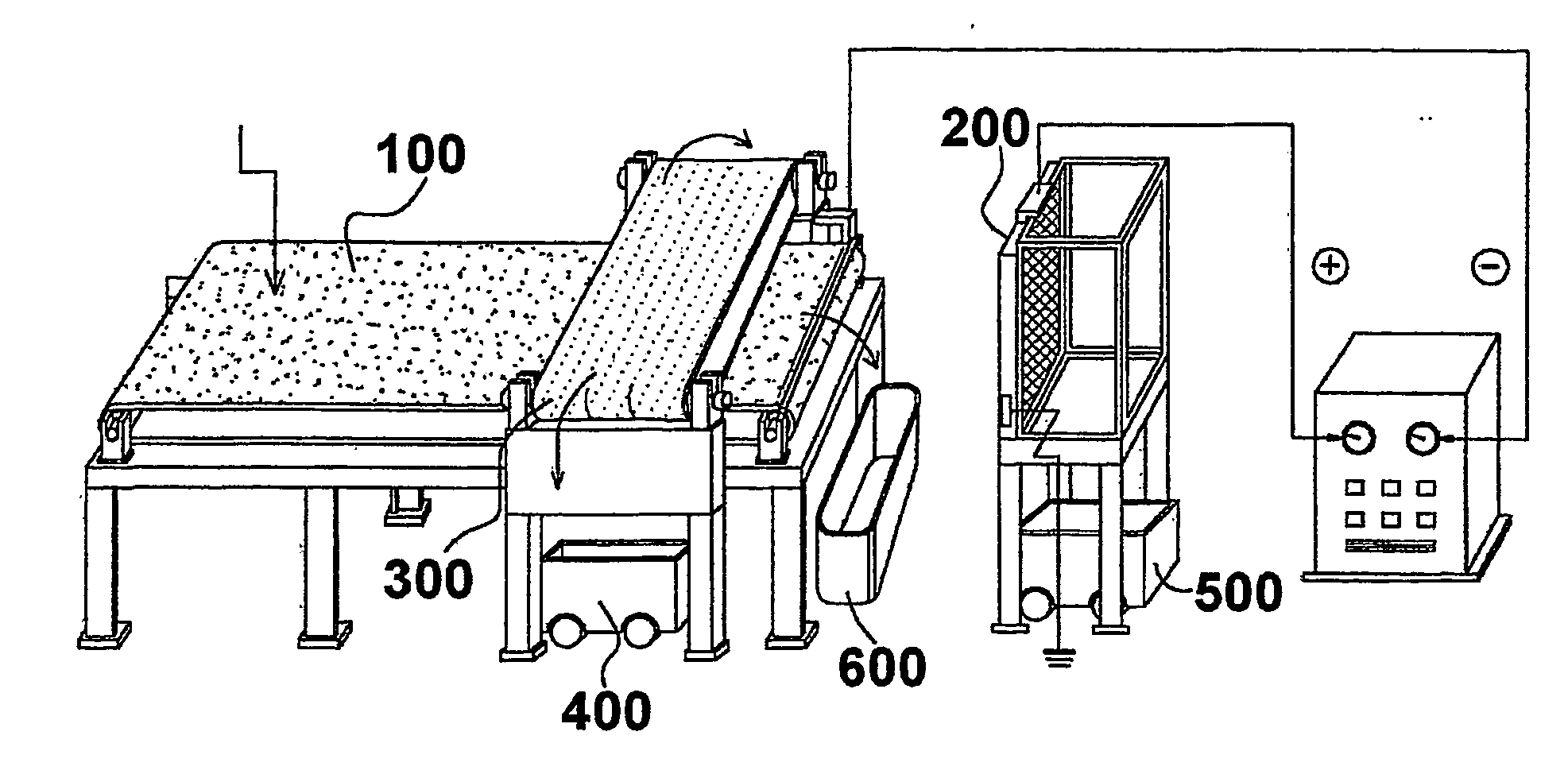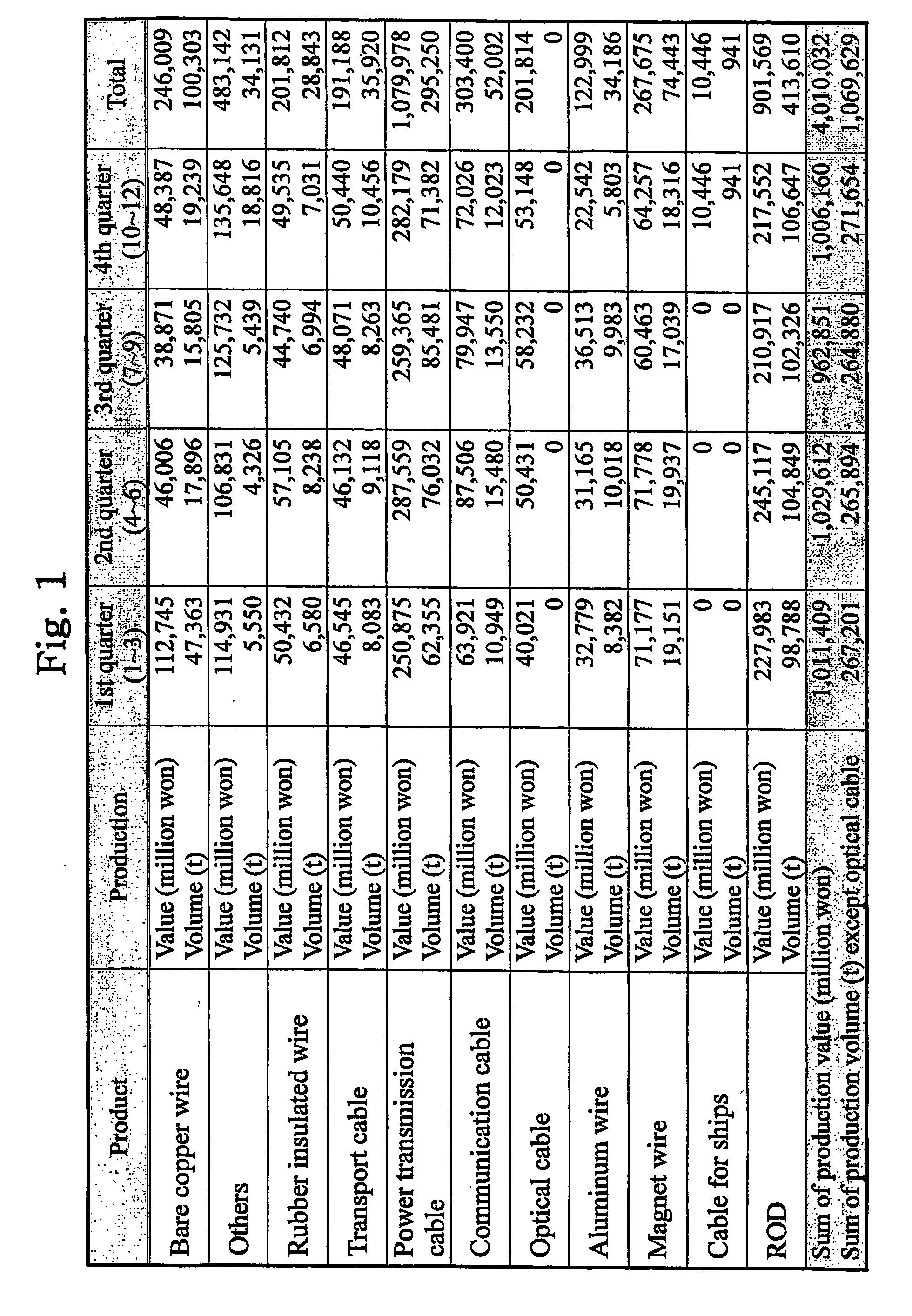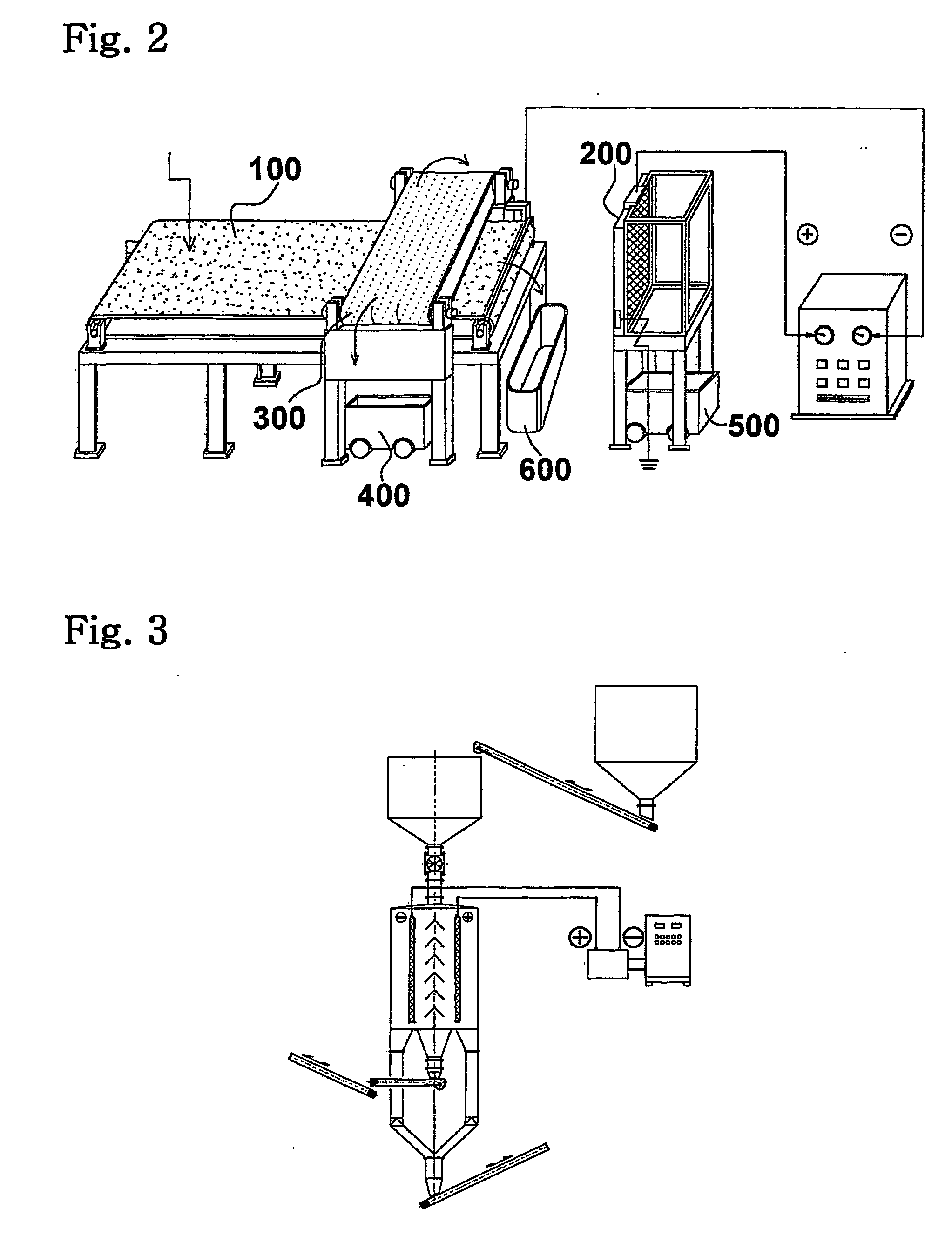Electrostatic separation system for removal of fine metal from plastic
a technology of electrostatic separation and plastic, which is applied in the direction of electrostatic separation, solid separation, chemical instruments and processes, etc., can solve the problems of large amount of money required to completely separate the fine copper wires, insufficient recycling of fine electric wires such as communication cables, and inability to recycle coating plastics. to achieve the effect of improving separation efficiency and improving separation efficiency
- Summary
- Abstract
- Description
- Claims
- Application Information
AI Technical Summary
Benefits of technology
Problems solved by technology
Method used
Image
Examples
Embodiment Construction
[0026] Reference will now be made in detail to the preferred embodiments of the present invention, examples of which are illustrated in the accompanying drawings.
[0027]FIG. 6 is an example of input materials fed into an electrostatic separation system in accordance with the present invention. In an embodiment of the present invention, optical communication cables, which are cut into small bits less than 3 mm in length, are used as input materials. Generally, large plastics and metal bits in size can be easily separated by the electrostatic separation system because the large metal bit has a high specific gravity. However, in case of a fine metal wire such as communication cable, the small and fine metal cannot be separated by means of specific gravity selection because it has a large specific surface area. Thus, in the present invention, the communication cables are cut into less than 3 mm in length.
[0028]FIG. 7 is a schematic diagram of an electrostatic separation system in accor...
PUM
 Login to View More
Login to View More Abstract
Description
Claims
Application Information
 Login to View More
Login to View More - R&D
- Intellectual Property
- Life Sciences
- Materials
- Tech Scout
- Unparalleled Data Quality
- Higher Quality Content
- 60% Fewer Hallucinations
Browse by: Latest US Patents, China's latest patents, Technical Efficacy Thesaurus, Application Domain, Technology Topic, Popular Technical Reports.
© 2025 PatSnap. All rights reserved.Legal|Privacy policy|Modern Slavery Act Transparency Statement|Sitemap|About US| Contact US: help@patsnap.com



